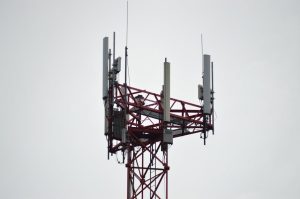Starlink: Revolutionizing Global Internet Connectivity with Satellite Technology

Starlink: Revolutionizing Global Internet Connectivity with Satellite Technology
Starlink is a satellite constellation developed by SpaceX, a private aerospace manufacturer and space transport services company founded by Elon Musk. The project aims to provide high-speed, low-latency internet connectivity across the globe, especially in areas where traditional fiber-optic infrastructure is lacking or non-existent. With its advanced technology and vast coverage, Starlink is set to revolutionize the way we access the internet.
The concept of satellite internet is not new, but previous attempts have been limited by high latency, low speeds, and expensive costs. Starlink, however, promises to change this narrative with its cutting-edge technology. The constellation consists of thousands of small satellites in low Earth orbit, each equipped with advanced transceivers and phased array antennas. This allows for faster data transfer rates and lower latency, making it comparable to traditional fiber-optic internet services.
One of the key advantages of Starlink is its ability to provide global coverage, including in remote and underserved areas. The satellites are designed to communicate with each other, forming a mesh network that enables seamless data transfer between different parts of the world. This makes it an attractive solution for areas where traditional infrastructure is lacking, such as rural communities, developing countries, and even entire continents like Africa.
In addition to its technical capabilities, Starlink also has the potential to democratize access to the internet. By providing a reliable and affordable connection, it can help bridge the digital divide and enable people in underserved areas to participate in the global economy. This can have a significant impact on education, healthcare, and economic development, especially in areas where access to information and resources is limited.
Despite its promising potential, Starlink also faces several challenges and controversies. One of the main concerns is the risk of satellite congestion, as the increasing number of satellites in low Earth orbit can lead to collisions and interference with other space-based systems. There are also concerns about the environmental impact of launching thousands of satellites into space, as well as the potential for space debris and orbital pollution.

